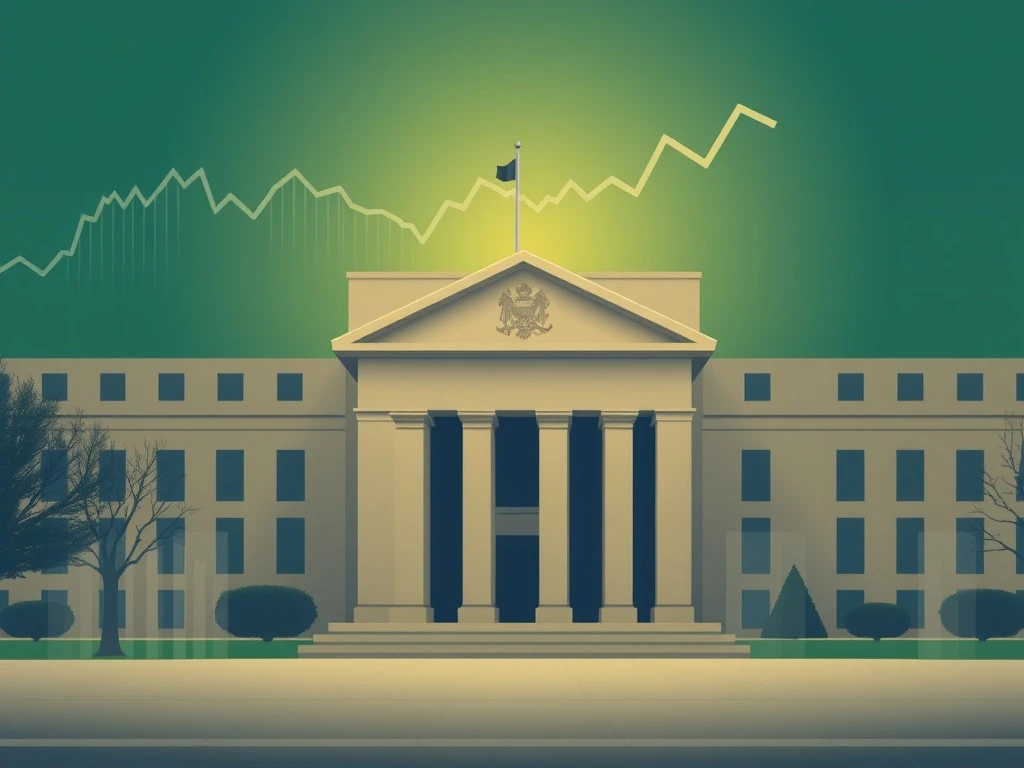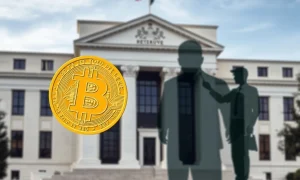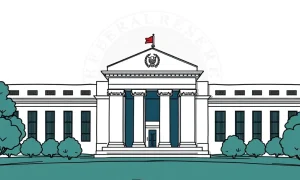Business leaders and entrepreneurs closely watch Federal Reserve actions. Indeed, these decisions profoundly impact financial markets and economic planning. Recently, Minneapolis Federal Reserve President Neel Kashkari suggested a potential Fed Rate Cut in September. This statement aligns with views from other key officials. Therefore, understanding this shift is crucial for strategic decision-making.
Kashkari’s Evolving Stance on the Fed Rate Cut
Neel Kashkari, previously considered one of the more hawkish Federal Reserve officials, has indicated a significant shift in his outlook. His recent comments suggest an openness to a Fed Rate Cut later this year. Specifically, he mentioned September as a possible timeframe. This change reflects evolving economic data. Moreover, it highlights a broader consensus forming within the Federal Open Market Committee (FOMC).
Kashkari’s past positions often prioritized combating inflation aggressively. However, current economic indicators are painting a different picture. Inflation appears to be cooling. Furthermore, the labor market shows signs of rebalancing. Consequently, the urgency for maintaining high interest rates might be diminishing. This new perspective from a prominent hawk signals a notable pivot. It suggests that the Fed is seriously considering easing monetary policy soon.
Broader Consensus for a Potential Fed Rate Cut
Kashkari is not alone in this evolving viewpoint. Several other Fed officials have also hinted at the possibility of a Fed Rate Cut this year. For instance, Federal Reserve Chair Jerome Powell has consistently emphasized data dependency. He has also acknowledged progress on inflation. Similarly, other governors have expressed cautious optimism about the economic trajectory. They observe that inflation is moving towards the Fed’s 2% target.
However, some officials remain more cautious. They prefer to see more definitive evidence of sustained disinflation. This nuanced approach reflects the complexity of monetary policy decisions. The Fed aims to avoid cutting rates too soon. Such an action could reignite inflationary pressures. Conversely, waiting too long risks slowing economic growth excessively. Therefore, the committee balances these competing concerns carefully.
Key considerations for the FOMC include:
- Inflation Data: Specifically, the Consumer Price Index (CPI) and Personal Consumption Expenditures (PCE) reports.
- Labor Market Strength: Employment figures, wage growth, and unemployment rates.
- Economic Growth: Gross Domestic Product (GDP) reports and consumer spending trends.
Economic Indicators Driving the Fed Rate Cut Discussion
The Federal Reserve’s decisions are fundamentally data-driven. Recent economic reports have provided crucial insights. These insights are now shaping the discussion around a potential Fed Rate Cut. Inflation, while still elevated, has shown a clear downward trend. The latest CPI figures indicate a moderation in price increases. Furthermore, the PCE index, the Fed’s preferred inflation gauge, also supports this disinflationary narrative.
The labor market, another critical factor, is gradually rebalancing. While job growth remains solid, it has cooled from its peak. Wage growth is also moderating. This suggests less pressure on businesses to raise prices. Moreover, the unemployment rate remains low, indicating resilience. This combination of cooling inflation and a healthy labor market provides the Fed with flexibility. It allows them to consider policy adjustments.
Here’s a snapshot of key indicators:
- Inflation (PCE): Trending downwards towards the 2% target.
- Unemployment Rate: Stable and low, around 3.9%.
- Wage Growth: Showing signs of deceleration.
These positive trends strengthen the argument for a Fed Rate Cut. They suggest that restrictive monetary policy has achieved its intended effect. Consequently, the economy might now handle lower interest rates.
Market Implications of a Potential Fed Rate Cut
The prospect of a Fed Rate Cut significantly impacts financial markets. Investors closely monitor every Fed statement. A rate cut generally signals a more accommodative monetary policy. This can have several effects across different asset classes. For example, lower interest rates typically boost stock markets. Companies can borrow more cheaply. This often leads to increased investment and higher profits. Furthermore, lower rates make equities more attractive compared to fixed-income investments.
Bond markets also react strongly. Bond prices typically rise when interest rates fall. This benefits existing bondholders. Conversely, new bond yields become less attractive. The housing market can also experience a boost. Mortgage rates often track the Fed’s benchmark rate. Lower mortgage rates make homeownership more affordable. This can stimulate demand and activity in the real estate sector.
Even the cryptocurrency market feels the effects. While less directly tied, crypto assets often benefit from a ‘risk-on’ environment. A Fed Rate Cut can encourage investors to seek higher returns in riskier assets. This includes cryptocurrencies. Therefore, a rate cut could provide tailwinds for digital assets. However, their volatility remains a key characteristic.
Potential Scenarios and Risks for the Fed Rate Cut
While a September Fed Rate Cut seems increasingly plausible, uncertainties remain. The Fed’s decisions are contingent on incoming data. Any unexpected surge in inflation could derail plans. Similarly, a significant weakening of the labor market could prompt an earlier, more aggressive cut. Therefore, the path forward is not set in stone.
The Fed faces a delicate balancing act. Cutting rates too soon risks reigniting inflation. This could force the Fed to reverse course later. Such a ‘stop-go’ policy could erode market confidence. Conversely, waiting too long risks pushing the economy into a recession. This would harm businesses and employment. Therefore, policymakers must carefully weigh these risks.
Furthermore, global economic conditions also play a role. Geopolitical events or slowdowns in major economies can influence the Fed’s domestic strategy. Supply chain disruptions, for instance, could trigger new inflationary pressures. Thus, the Fed’s approach remains flexible and adaptive. They continuously monitor a wide array of economic and global factors. This ensures their policy aligns with current realities.
The Road Ahead for the Fed Rate Cut
The evolving sentiment among Federal Reserve officials, notably Neel Kashkari, points towards a growing likelihood of a Fed Rate Cut in September. This shift is primarily driven by improving inflation data and a rebalancing labor market. While some caution persists, the overall tone suggests a move towards easing monetary policy. Businesses and investors must continue to monitor economic reports closely. These reports will provide further clarity on the Fed’s future actions.
A potential rate cut could offer significant opportunities. It might lower borrowing costs. It could also stimulate investment and growth across various sectors. However, the Fed’s data-dependent approach means flexibility is paramount. The journey towards achieving both price stability and maximum employment is ongoing. Therefore, vigilance remains key for all market participants.
Frequently Asked Questions (FAQs)
What is a Fed Rate Cut?
A Fed Rate Cut refers to the Federal Reserve lowering its benchmark interest rate, the federal funds rate. This action makes borrowing money cheaper for banks. Consequently, it lowers interest rates for consumers and businesses. It aims to stimulate economic growth by encouraging spending and investment.
Why is Neel Kashkari’s recent statement significant?
Neel Kashkari was previously considered a more hawkish official. His shift towards supporting a potential September Fed Rate Cut indicates a broader consensus forming within the Federal Reserve. It suggests that even those prioritizing inflation control are now seeing sufficient progress to consider easing policy.
What economic data influences a Fed Rate Cut decision?
The Federal Reserve primarily considers inflation data (like CPI and PCE), labor market indicators (unemployment rate, job growth, wage growth), and overall economic growth (GDP). Positive trends in these areas, particularly moderating inflation, support a Fed Rate Cut.
How might a Fed Rate Cut impact stock markets?
A Fed Rate Cut typically has a positive impact on stock markets. Lower borrowing costs can boost corporate profits. This makes equities more attractive compared to lower-yielding bonds. It often leads to increased investor confidence and higher stock prices.
Could a Fed Rate Cut affect the cryptocurrency market?
While not directly linked, a Fed Rate Cut can indirectly influence the cryptocurrency market. Lower interest rates may encourage investors to seek higher returns in riskier assets, including cryptocurrencies. This can contribute to a ‘risk-on’ sentiment, potentially benefiting digital assets.
What are the risks associated with a Fed Rate Cut?
The main risk of a Fed Rate Cut is that it could reignite inflation if done too soon or too aggressively. Conversely, waiting too long risks stifling economic growth. The Fed aims for a ‘soft landing,’ balancing these risks to achieve both price stability and maximum employment.
























